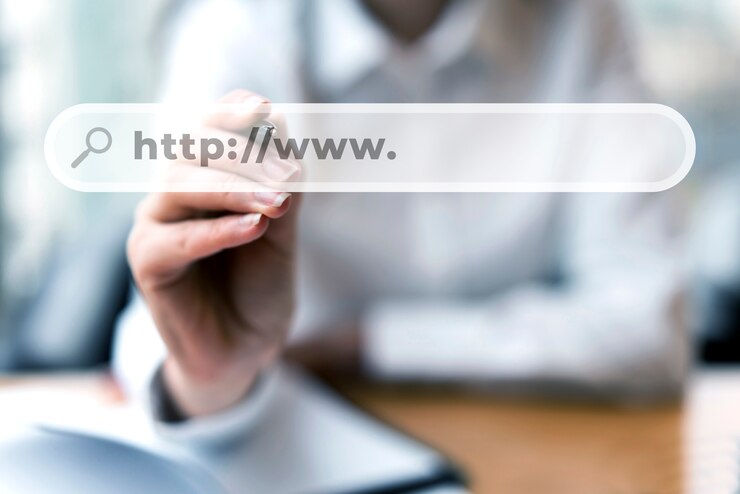The Internet is full of harmful and deceptive websites. These sites are replete with malicious threats, malware, and inappropriate content. Cybercriminals inject malware and viruses into these fake, malicious, and illegitimate websites. These are snares that are laid to trap innocent users. When you visit and download anything from these illegitimate websites, malware and viruses infiltrate your computer. These malicious programs steal your personal information, financial credentials, and sensitive data and spy on your online activities. Due to this, you are exposed to all the possible dangers in the world. Therefore, it is crucial to check if a website is safe before you access it on your device network.
So, how can you check if a website is safe to visit, download files, and carry out any type of business without any fear of cyber attack? The following write-up provides you with seven useful tips to check if a website is safe or not. Let’s discuss them one by one.
1. Look For an SSL Certificate
SSL stands for secure socket layer. It is a digital certificate that certifies if a website is legitimate, authentic, and genuine. This certificate ensures that the website encrypts all the data and personal information of the customer and visitor. Websites that have SSL certificates have ‘HTTPS’ at the start of their URLs. The ‘S’ at the end of ‘HTTPS’ stands for secure. Along with the secure sign, there is a padlock at the start of the website URL. This is another sign that the page you are visiting is secure and provides end-to-end data encryption. Therefore, when you see these two signs in the URLs, it means it is safe, and you can proceed with your online activities.
But you will come across some web pages that do not carry any of the security signs in their URLs; in that case, do not think that they are completely unsecured. Rather, it is OK to visit such websites. But make sure that they represent a well-known platform with authentic products and services. You can use your knowledge and instincts in such a situation.
2. Verify Who Owns The Site
It is highly recommended that you verify who owns the site before visiting or making any kind of transaction. You can use Whois search to verify the facts of who owns the website. It will provide you with the contact details of the domain owner, registrar, and technical contact details. You can use this information to resolve legal disputes in the future. Once you have all the details, you can safely proceed with your business transaction using this tactic.
3. Utilize a URL Checker
Use a website checker to find out if a website is trustworthy, uncompromised, and harmful. You can use Google’s Safe Browsing site checker to find out the truth. It helps you detect and avoid unsafe online web pages. It scans the website to detect cyber threats, malware and viruses. If there is any danger, you will receive a warning message saying that this site is not safe. So, you can use a URL checker to find out the truth about an online platform.
4. Read Privacy Policy
You should read the privacy policy of the website that you are going to visit. It mentions all the security and privacy elements in detail. Reading this, you will be able to understand what information that site can collect when you visit or use its services. Safe websites cover the following elements in their privacy policy:
- What information can it collect, and for what purpose?
- Describes elaborately how it protects the data it collects from you.
- Provisions to review the information it collects from the users.
- Tenure how long it will protect your information in its database
- Contact information to allow users to connect and resolve queries.
- Uses clear and mistake-free language to describe everything in detail.
- Provisions to delete the collected data if you request them to clear the records.
When you see these elements clearly mentioned in the privacy policy, you can proceed to perform your online activities on the website. If you find them missing and obscure in the policy, then you should take complete precautions before you browse it on your device.
5. Read Reviews About The Website
Reading client testimonials and public reviews is one of the most reliable and quick methods to find out about the authenticity and trustworthiness of a website. These are original thoughts of people who have used and experienced the products, services, and information in reality. So you get to the bottom of the issue at once. Therefore, you can use client testimonials as a parameter to establish the truth and make an informed decision. Look for the following statements in the website feedback:
- Service quality and timely solutions.
- Unsafe business practices.
- Financial frauds and undue payment charges.
- Complaining about poor customer support services.
- Fake praises and overestimation of products and services.
Reading these statements, you can easily decide whether you should proceed with your online activities or not. If you sense positivity and neutrality in the reviews, then you can go on with your business peacefully.
6. Check the Content Quality
Fake and unauthentic websites use poor-quality content to describe their services, products, and other information. They use low-quality layouts and graphics that do not fit the subject. This is replete with grammatical mistakes, punctuation errors, and thought processes. It fails to express the idea properly and naturally. Therefore, you should always check for content quality, grammar, language, and the way it is put on the page. You will easily be able to identify whether it’s a safe website or a fake one.
7. Install an Antivirus Software
Last but not least, using antivirus software is one of the most effective ways to check if a website is safe. Antivirus software provides complete cybersecurity against malicious sites, malware, viruses, spam, and online data breaches. It protects your web browser from online attacks, hijackers, trackers, and spyware. If you employ online security software on your PC, it will protect your device network from unsafe websites, searches, and platforms. It will send you advanced alerts whenever you visit an unsafe online site using your device. If by any chance any malware, spyware, trojan, or harmful software comes close to your computer, it will immediately detect it and prevent it from infiltrating your network. Hence, use reliable antivirus software to browse the internet efficiently and without any fear.

